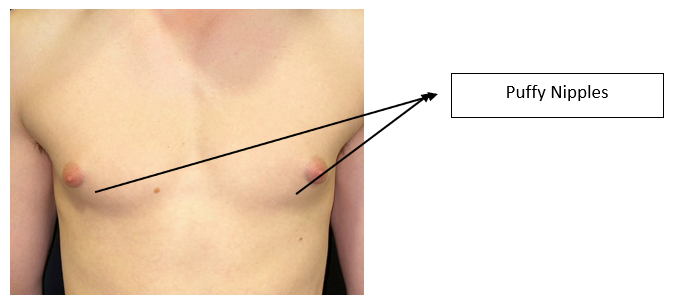What Are Puffy Nipples in Men?
Puffy nipples are a common concern among men and refer to a condition where the nipple and surrounding areola appear swollen, raised, or protruded. This is often due to a small but firm collection of glandular breast tissue underneath the nipple, which pushes the areola outward. While puffy nipples may not always indicate a health problem, they are frequently a mild form of gynecomastia — the benign enlargement of male breast tissue. This condition can affect males of all ages and body types, including those who are lean and physically fit, and often does not respond to diet or exercise alone.
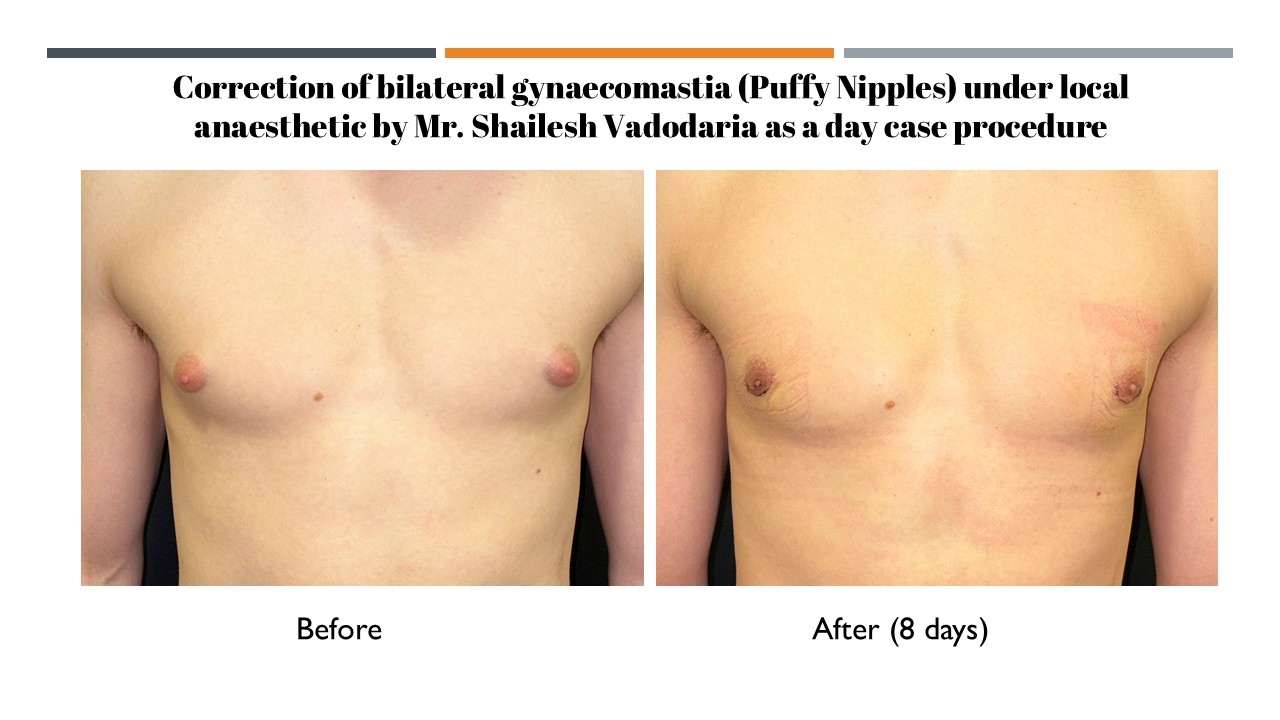
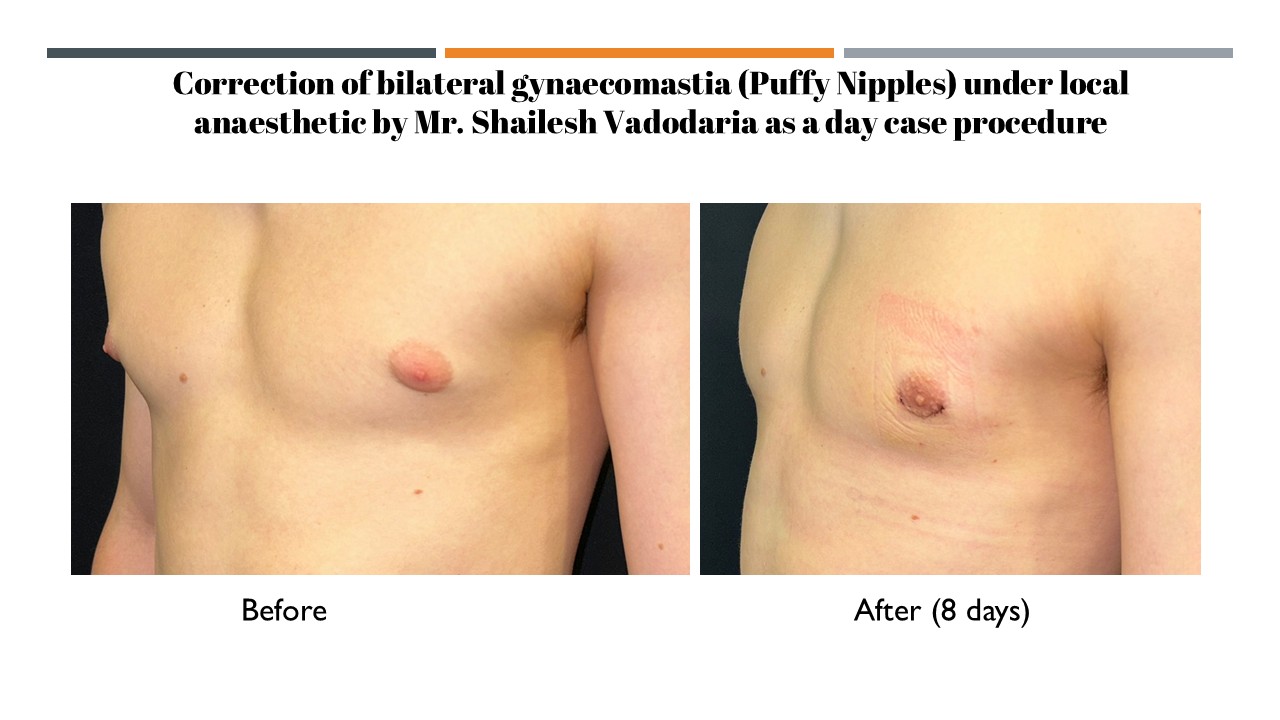
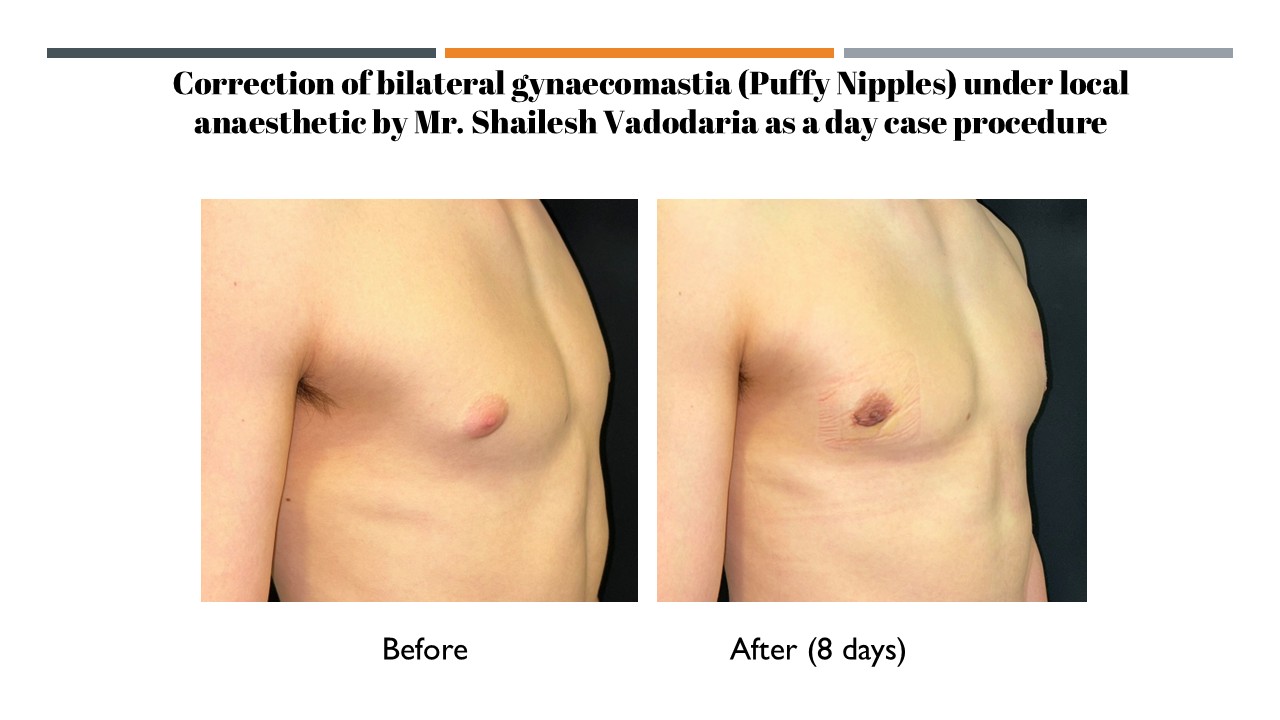

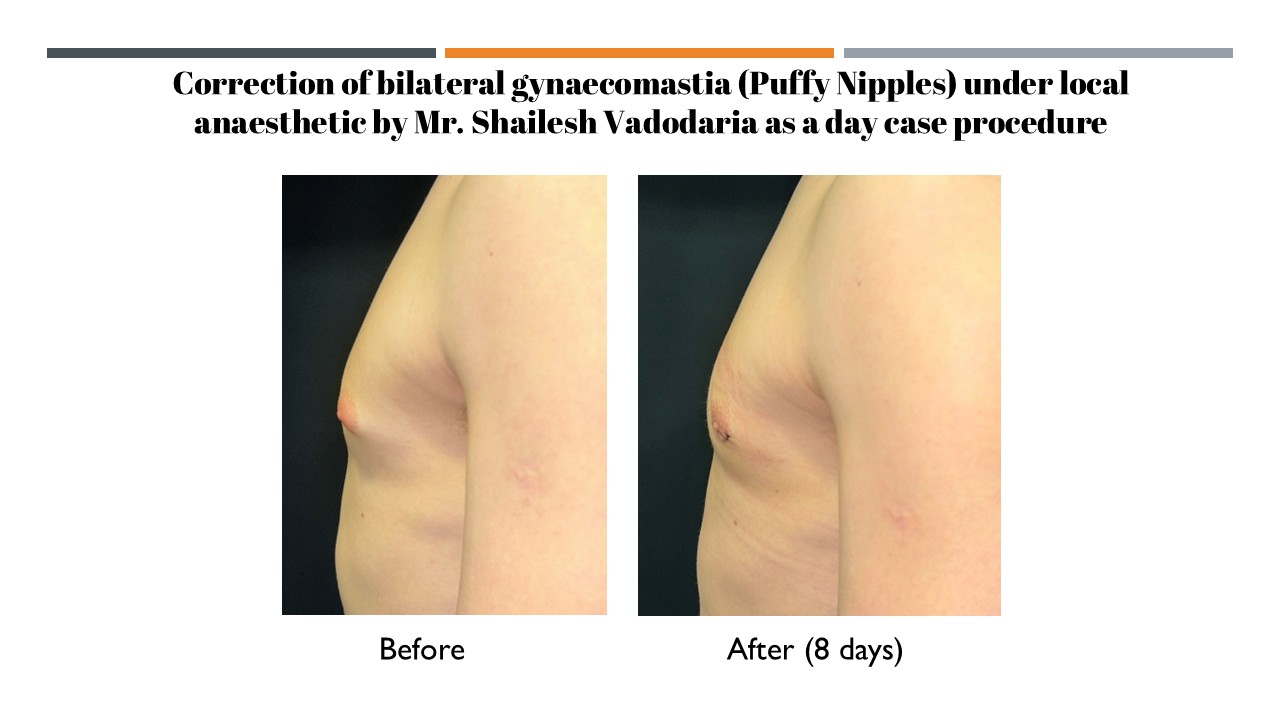
Causes of Puffy Nipples in Men
- Hormonal Imbalance
One of the most common causes of puffy nipples is a hormonal imbalance, specifically between the hormones testosterone and estrogen. Testosterone is the primary male hormone, while estrogen, though present in small amounts in men, is responsible for breast tissue development. When estrogen levels increase or testosterone levels drop, this imbalance can stimulate the growth of breast tissue, particularly under the nipples, leading to puffiness.
- Puberty
During puberty, boys undergo major hormonal changes that can lead to temporary breast tissue enlargement, including puffy nipples. This is a normal part of development and usually resolves on its own within a couple of years. However, in some cases, the condition persists into adulthood, requiring medical evaluation and possible treatment.
- Medications and Substances
Certain medications and substances are known to contribute to the development of gynecomastia and puffy nipples. These include anabolic steroids, marijuana, alcohol, anti-androgens (used to treat prostate conditions), antidepressants, some heart medications, and anti-ulcer drugs. These substances may either directly affect hormone levels or influence breast tissue growth through other mechanisms.
- Obesity
In overweight or obese individuals, fat tends to accumulate around the chest area, which can mimic the appearance of gynecomastia — a condition referred to as pseudogynecomastia. However, in many cases, true glandular tissue is also present beneath the fat, contributing to the puffy appearance. Even with weight loss, this glandular tissue often remains unchanged, leaving the puffiness intact.
- Underlying Medical Conditions
Certain medical conditions can also lead to hormonal imbalances or directly stimulate breast tissue growth. These include liver disease, kidney failure, thyroid disorders, and testicular tumors.
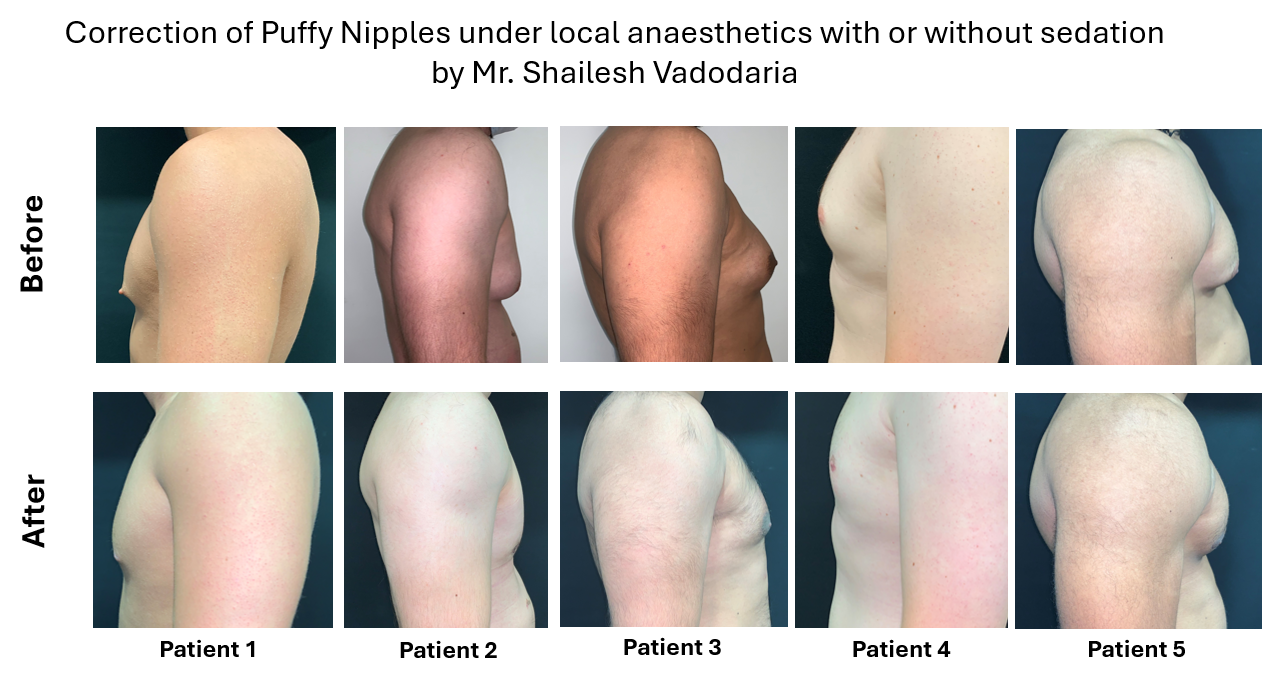
Challenges Men Face Due to Puffy Nipples
Although puffy nipples may not be physically harmful, they can cause significant psychological, emotional, and social distress in men.
- Low Self-Esteem
Men with puffy nipples often feel self-conscious about their appearance. They may perceive their chest as feminine or unattractive, leading to a lack of body confidence and negative self-image. This can impact their overall self-esteem and mental well-being.
- Social Insecurity
Many men avoid social situations that require removing their shirt, such as swimming, sunbathing, or playing sports. They may feel embarrassed in locker rooms or while changing clothes in public areas. This can limit their social interactions and cause them to withdraw from group activities.
- Clothing Limitations
Puffy nipples can influence the way men dress. They may avoid wearing fitted clothing, thin fabrics, or light-colored shirts that reveal the shape of their chest. Many resort to wearing multiple layers or compression garments just to feel comfortable and hide the puffiness.
- Relationship and Intimacy Concerns
Puffy nipples can affect confidence in romantic and intimate situations. Men may hesitate to remove their shirts in front of a partner or feel anxious about being judged based on their appearance. This can lead to insecurity, reduced sexual confidence, and difficulty forming close relationships.
- Frustration with Physical Fitness
Even men who exercise regularly and have low body fat may still struggle with puffy nipples due to underlying glandular tissue. This can be incredibly frustrating, as the condition does not respond to chest workouts or diet. Despite having well-defined muscles, the chest may still appear soft or swollen.
- Delay in Seeking Help
Many men delay seeking treatment because they are unaware that puffy nipples can be corrected, or they fear the stigma associated with cosmetic procedures. Some feel embarrassed discussing the issue or assume that surgery is not an option for them. As a result, they suffer silently for years without knowing that a simple and effective solution exists.
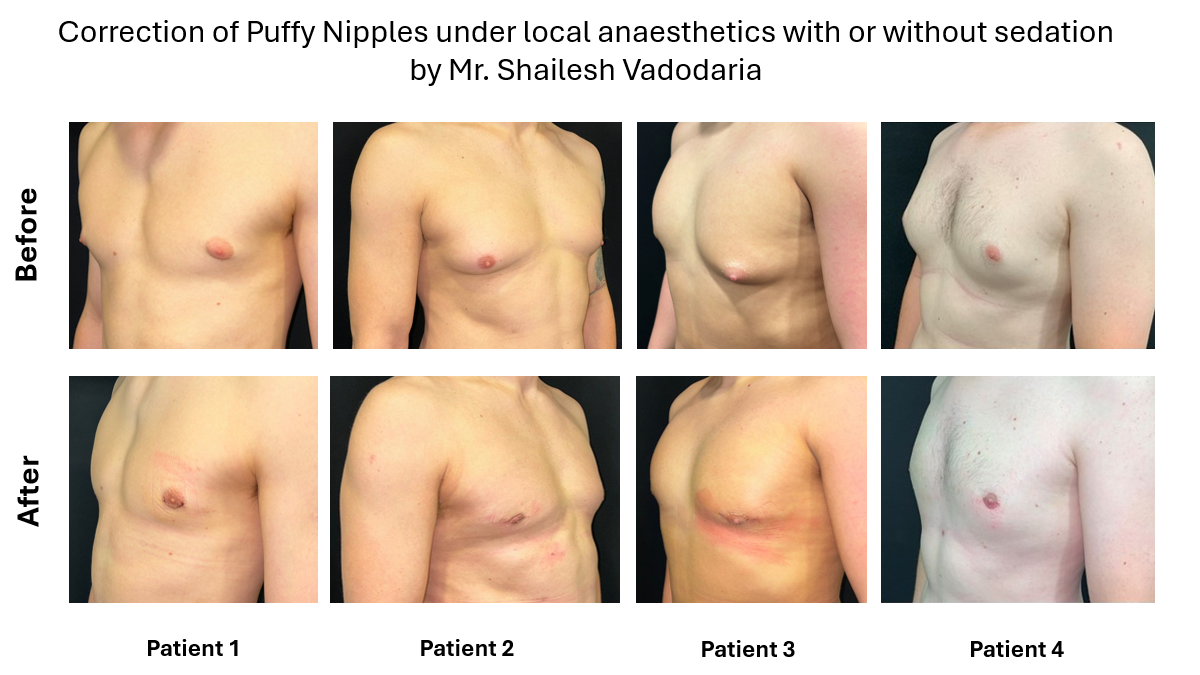
Treatment Options for Puffy Nipples
🔹 Non-Surgical Treatments
For men with early-stage or mild cases, several non-surgical options may offer limited benefit:
- Lifestyle Changes: Regular exercise and a healthy diet can reduce overall body fat, which may improve the appearance if fat is a major component. However, these measures do not remove glandular tissue.
- Medication Review: If a drug or substance is contributing to the condition, your doctor may adjust or change your medication under supervision to see if the symptoms improve.
- Hormonal Therapy: In select cases where hormone imbalance is identified, medications like tamoxifen (a selective estrogen receptor modulator) may be prescribed. This treatment works best when initiated early and is rarely effective for established tissue.
- Compression Garments: These specialized undershirts can flatten the chest temporarily and help improve self-confidence in social or professional settings. However, they do not treat the underlying condition.
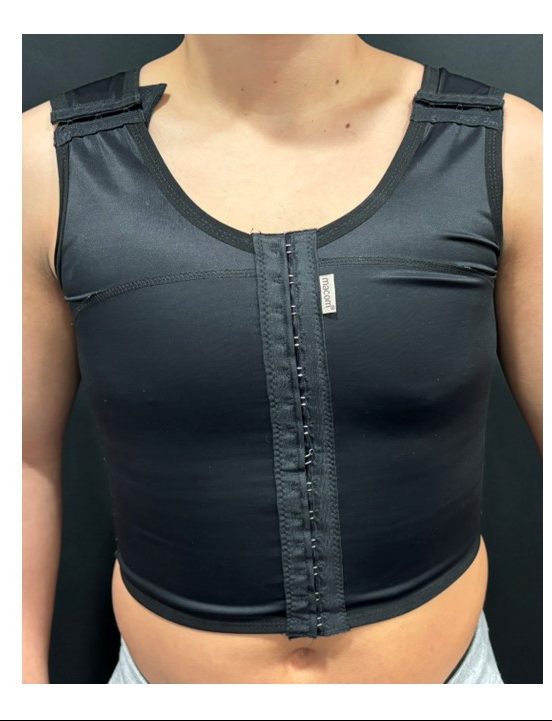
While these options may provide temporary relief or concealment, they cannot permanently eliminate puffy nipples once glandular tissue is fully developed.
🔹 Surgical Treatment: Gland Excision at MACS Clinic
For most men with persistent puffy nipples, surgical correction is the most effective and lasting solution.
At MACS Clinic, Mr. Shailesh Vadodaria perform male breast reduction surgery using a minimally invasive technique focused specifically on removing the glandular tissue responsible for puffiness.
The Surgical Procedure Includes:
- A small incision made discreetly along the edge of the areola.
- Precise removal of the glandular breast tissue causing the puffiness.
- Optional liposuction to remove any excess fat around the chest for improved contour.
- Fine suturing techniques to minimise scarring
The procedure is usually done by Mr. Vadodaria under local anaesthesia with sedation or general anaesthesia and typically takes about 60 to 90 minutes. It is a day-care surgery, meaning you can return home the same day.
Understanding the Costs
The cost for Gynecomastia Correction (Male Breast Reduction) procedure at MACS Clinic varies depending on the specifics of your case:
* Gynecomastia Correction (both side) under local anaesthetics: From £2000
* Gynecomastia Correction (both side) under local anaesthetics: From £3500 to £5500
These prices may vary based on factors such as the type of anaesthesia used and your choice of clinic or hospital. The final cost estimate will be provided to you after your consultation with Mr. Shailesh Vadodaria.
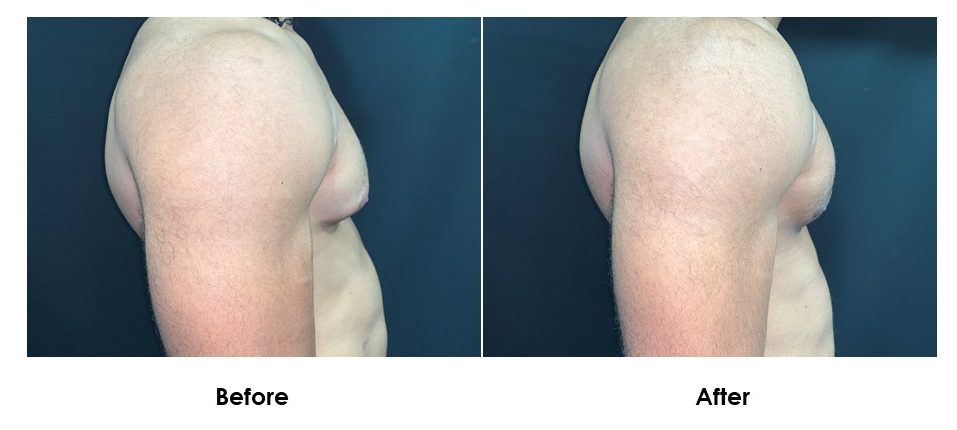
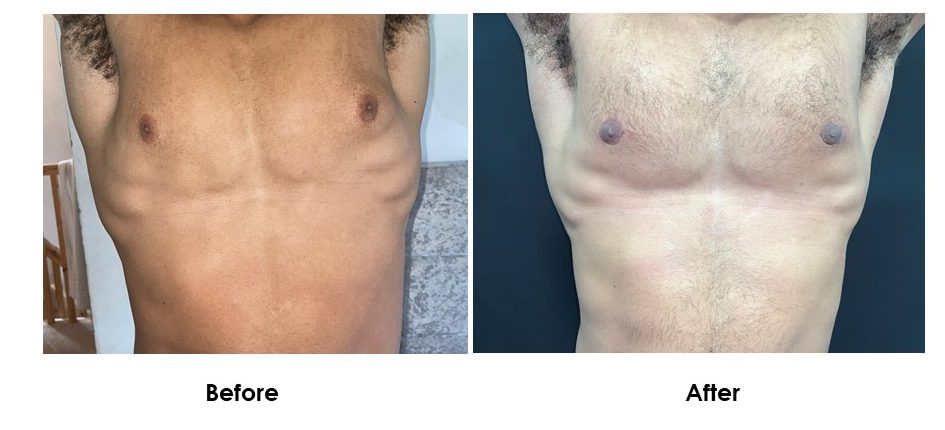
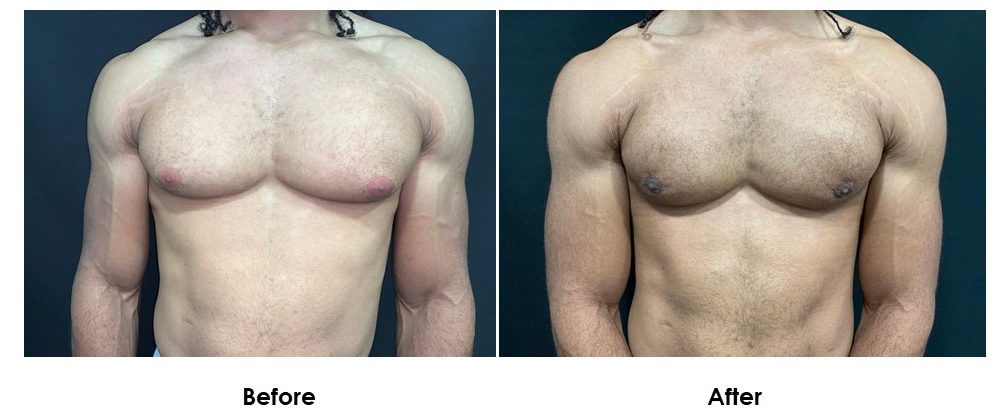
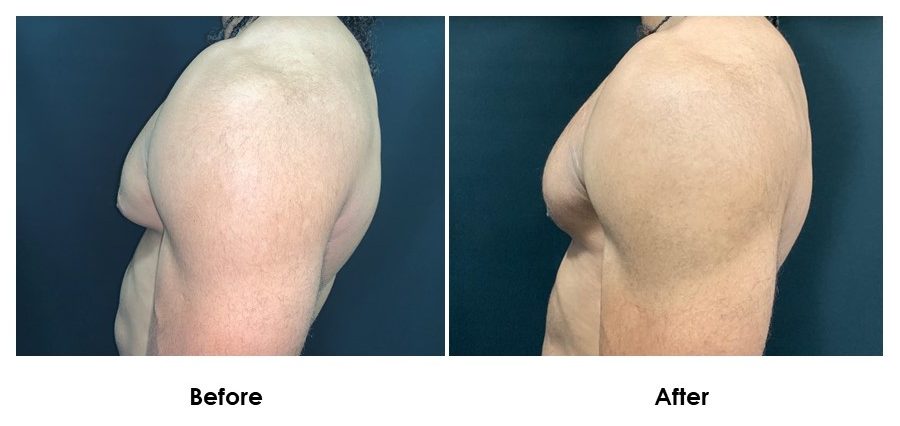
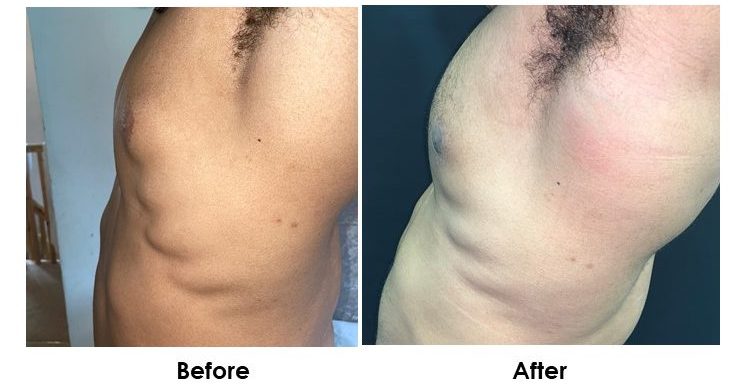

Recovery and Aftercare
- Patients return to work or normal activities within 2–5 days.
- Mr. Vadodaria recommends to wear a compression vest for 3–4 weeks to support the healing tissue and reduce swelling.
- Mr. Vadodaria recommends to resume light activities after one week, while more intense exercise is usually resumed after 4–6 weeks.
- Any discomfort is usually mild and managed with oral medications and analgesics.
- Follow-up appointments to see Mr. Vadodaria will be booked in 1 week and 6 weeks’ time following the procedure.
Why Choose MACS Clinic?
✔ Expertise: Mr. Shailesh Vadodaria, senior consultant plastic surgeon has experience of nearly 20 years in minor surgery.
✔ Patient-Centric Care: We endeavour to treat every patient with empathy, discretion, and professionalism.
✔ Sterile Environment: Clean, state-of-the-art facilities ensure safety and comfort.
✔Cosmetic Consideration: We minimize scarring
✔ Quick Appointments & Efficient Recovery: Minimal downtime.
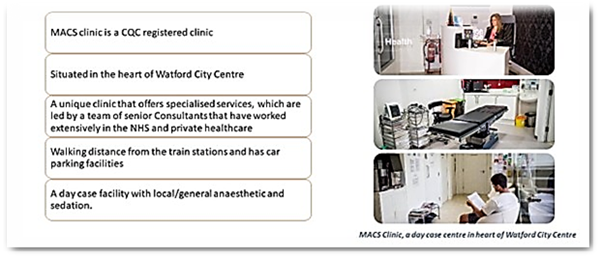

Contact MACS Clinic
- Phone: 020 7078 4378
- WhatsApp: 07792 648 726
- Email: enquiries@macsclinic.co.uk
- Website: www.macsclinic.co.uk
- BOOK a FREE Video Consultation: https://calendly.com/macsclinic/free-video-consultation?month=2025-01

